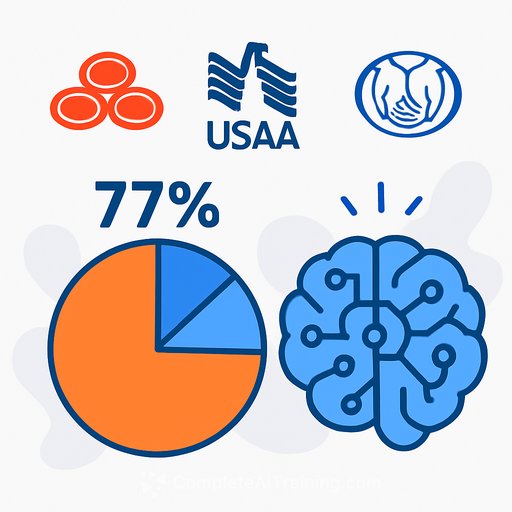How AI Helped a California City Insure Against Flood Risk
Floods are frequent, unpredictable, and costly. Fremont, California, became one of the first cities to adopt flood insurance shaped by artificial intelligence. This policy protects not only city property but also covers economic losses resulting from flooding.
In Brief:
- Recent floods have caused financial strain on local governments.
- Scientists are creating new tools and maps that enable insurers to cover entire areas instead of individual buildings.
- Fremont is among the first to purchase this AI-driven parametric flood insurance, which pays out based on pre-set trigger events.
The police complex in Fremont sits on a hill that technically lies within a floodplain. Due to bond requirements, this building was insured for flood risk, even though it was unlikely to be flooded. Steven Schwarz, Fremont’s risk manager, found this approach inefficient. He wanted coverage for other properties more vulnerable to flooding.
His insurance broker introduced an alternative: a parametric policy covering the entire city area. Payouts occur based on predefined triggers rather than actual damage assessments to specific buildings. This concept dates back to the 1940s but gained traction in the 1990s. Since Fremont already had parametric coverage for earthquakes, adopting it for flood risk was a logical step.
Predicting exact flood damage locations is challenging. Covering a geographic area broadly offers better value. Floods remain the most common and expensive natural disaster but are hard to predict accurately. AI supplies insurers with the data needed to develop parametric flood policies that are fair and financially viable. Fremont, without a major flood history, was an early adopter. As climate patterns shift, other communities may follow suit.
How These Policies Work
Alex Kaplan, an executive vice president at Amwins, explains that parametric policies pay out when specific event parameters are met, such as wind speed or earthquake magnitude. Unlike traditional insurance, payouts do not involve post-event damage assessments by adjusters and are typically settled within 30 days.
Recipients can use the funds as they see fit. Payouts are fixed, removing disputes over claim amounts. Parametric insurance complements, rather than replaces, traditional property coverage. For example, it can help cover deductibles, which otherwise create significant coverage gaps on high-value assets.
Increasing atmospheric temperatures contribute to more intense rainstorms, but other factors influence local water movement. AI enables planners and insurers to analyze current and historical data to better predict flood behavior at the community level.
Closing Coverage Gaps
Disaster costs are rising faster than insured risk, leaving public entities to cover much of the protection gap. Local governments face exposure beyond just owned buildings. The loss of key facilities like police stations or City Hall disrupts operations, but the broader economic impact often lies in lost tax revenues and business interruptions.
Kaplan cites the 2017 Tubbs Fire aftermath, where Santa Rosa had to take an uncollateralized state loan just to service existing debt. This illustrates how disasters can strain municipal finances well beyond physical damage.
Water Where It’s Not Supposed to Be
Beth Tellman, co-founder and chief scientist at Floodbase, developed a platform that uses AI to monitor flooding in real time. This tool integrates satellite data, stream gauges, ground sensors, hydrologic models, and rainfall information to provide detailed flood insights.
Floodbase’s AI-driven approach offers a comprehensive view of flood patterns and economic impacts on communities. This data helps insurers price new insurance products more accurately. Unlike past estimates that focused on isolated factors like storm surge or river flooding, this method captures the complexity of flooding events.
Satellites detect factors influencing floods that numbers alone might miss, such as infrastructure changes or blockages like trees in culverts. Instead of long-term climate projections, Floodbase uses a 40-year continuous data record to improve current flood behavior understanding. Up-to-date insights are critical, especially since some federal floodplain maps still rely on outdated rainfall data from the 1970s.
Exposure Matters
An AI-assisted simulation of a 1998 Fremont flood helped Schwarz see the value of parametric insurance. The new policy covers 100 square miles, far beyond just the police complex, offering a more practical return on investment.
While climate change influences flood frequency, the main driver of economic loss is exposure. Areas hit hardest by disasters often experience rapid population growth in disaster-prone locations. For example, the region affected by Hurricane Ian saw population growth nearly ten times faster than the national average.
People tend to live and work in areas with varied topography, which often come with increased disaster risk. This reality makes parametric flood insurance a practical tool for managing financial risk in vulnerable communities.
For insurance professionals interested in leveraging AI for risk management and parametric insurance, exploring specialized training can provide valuable skills. Resources are available at Complete AI Training.
Your membership also unlocks:






